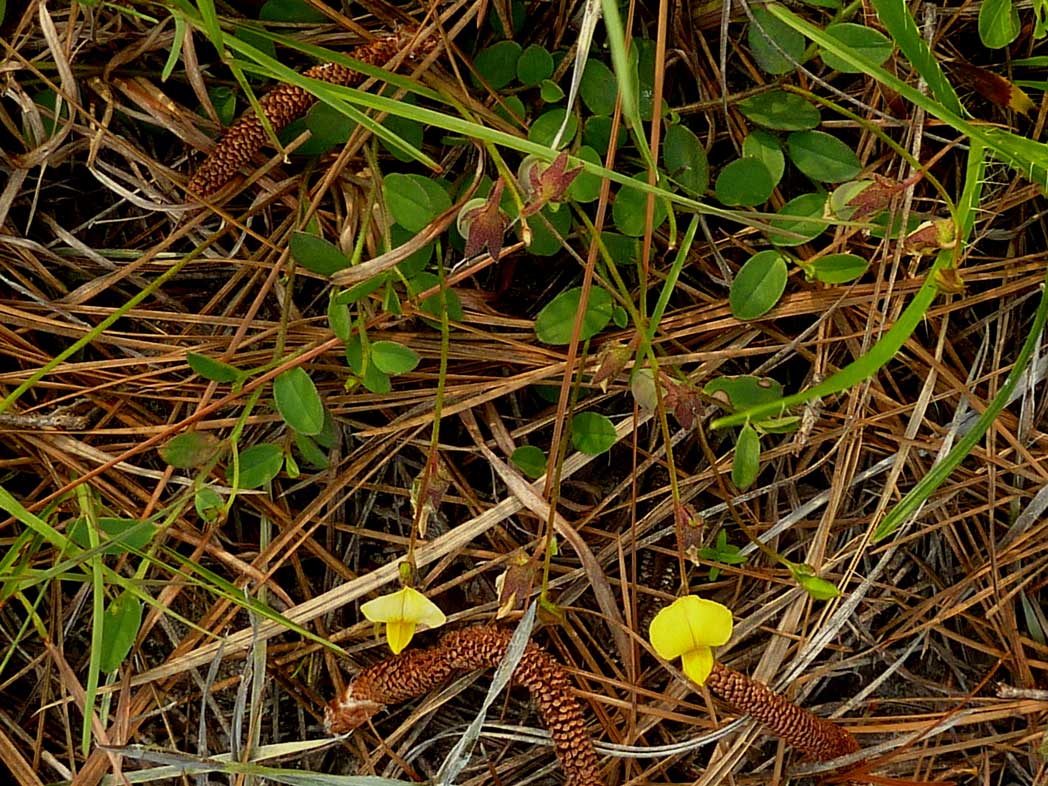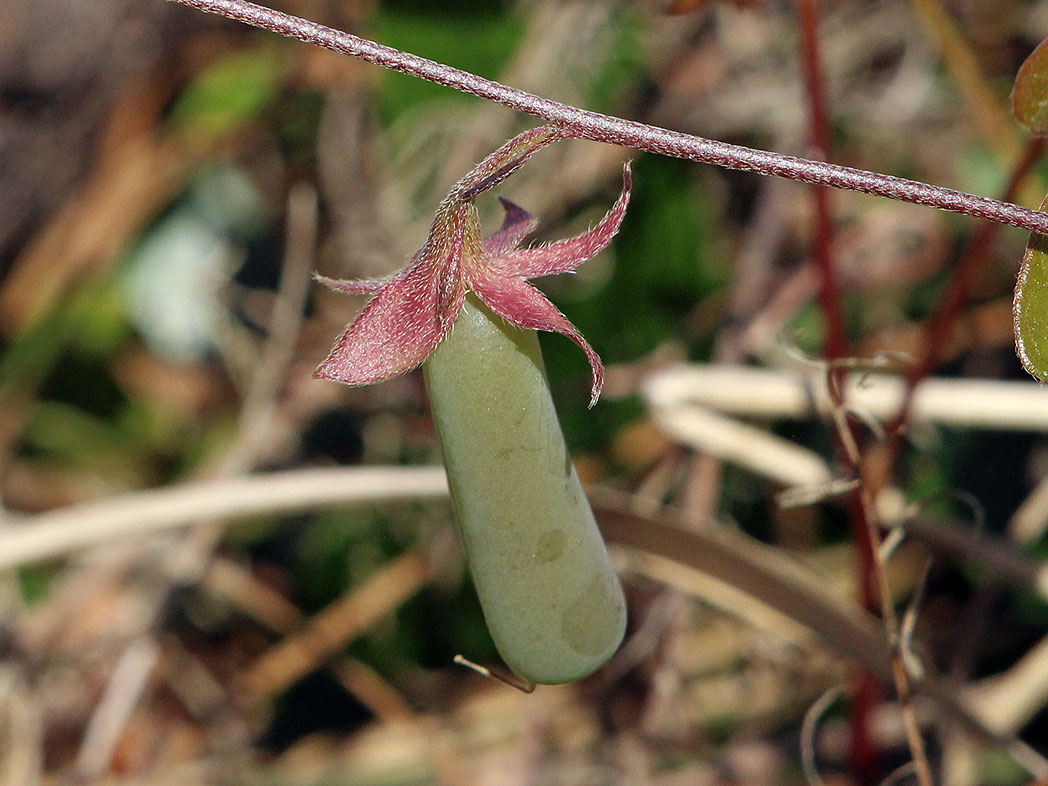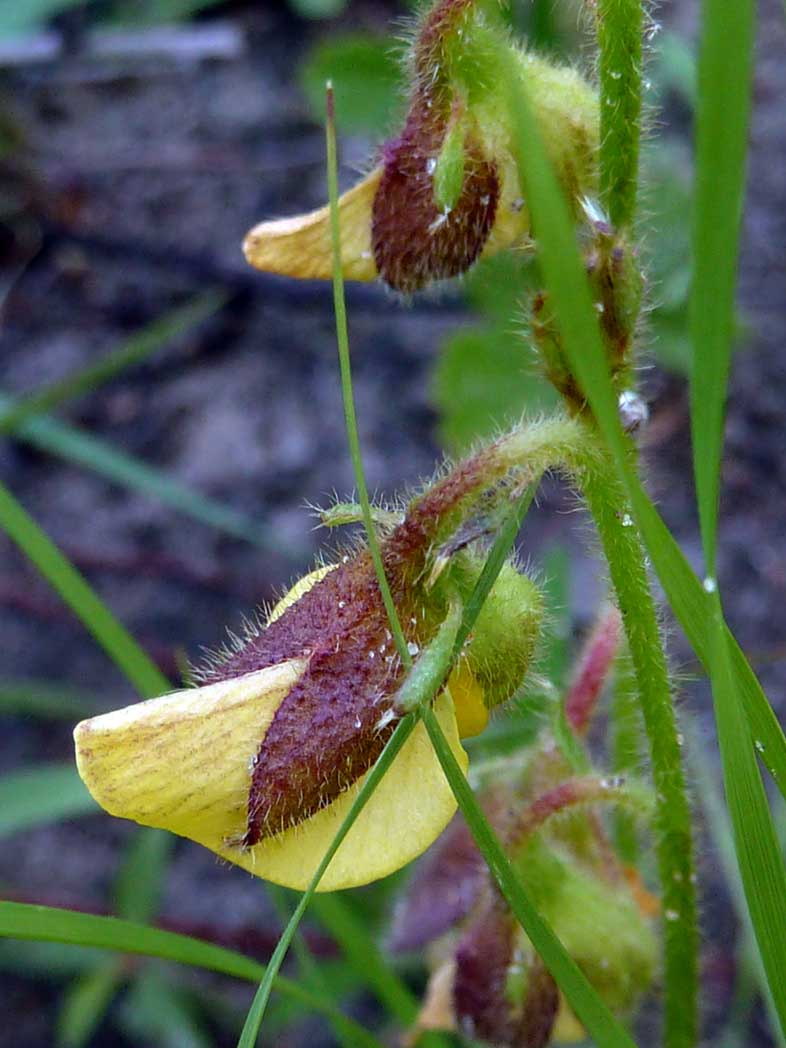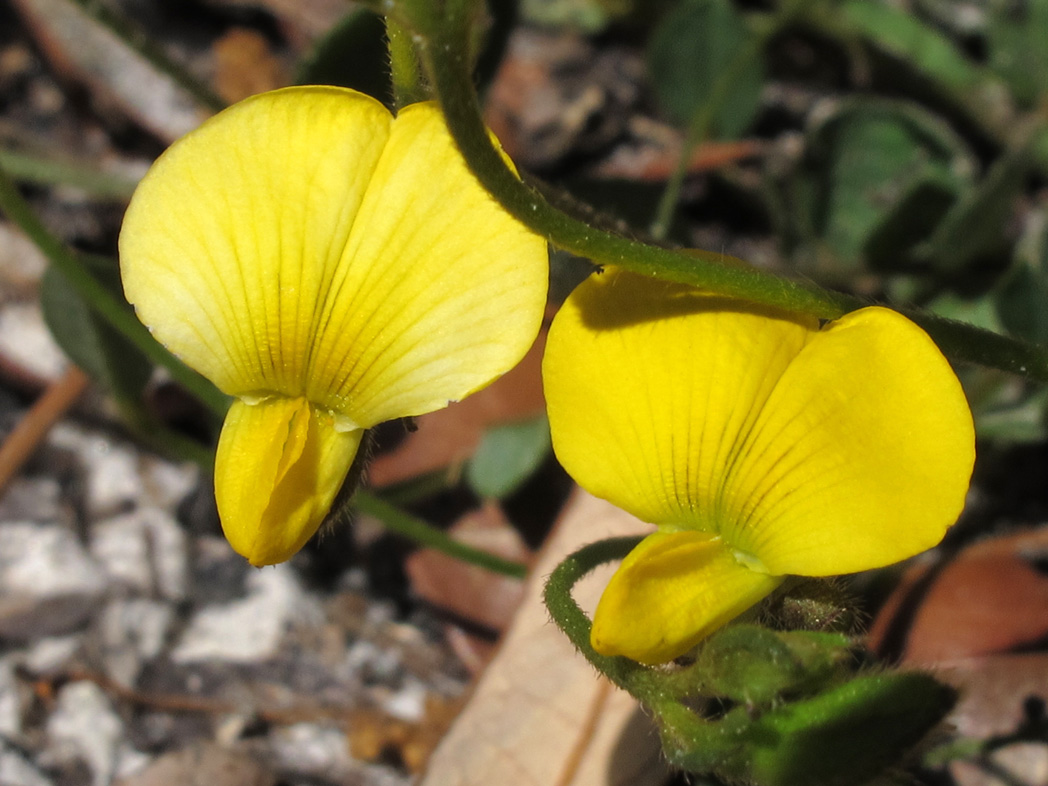Rabbitbells
Pictured above: Rabbitbells (Crotalaria rotundifolia) flowers taken at St. Marks National Wildlife Refuge. Photo by Alan Cressler, courtesy of Lady Bird Johnson Wildflower Center. Click on terms for botanical definitions. View post as a PDF
Rabbitbells is a low-growing wildflower found in pinelands, sandhills and disturbed sandy areas throughout Florida. Its small yellow flowers bloom throughout the year, attracting mostly bees. The unassuming plant often goes unnoticed as its flowers do not open until the afternoon and remain open only for one day. Of the 15 species of Crotalaria that occur in Florida, only four are native. Rabbitbells is the most common and widespread of the native species.
All Crotalaria species are poisonous if ingested due to the presence of pyrrolizidine alkaloids. Keep away from small children, pets and livestock. Despite the toxicity, plants in this genus are larval hosts for the Ceraunus blue butterfly and the Bella moth (also known as the Rattlebox moth). The latter relies on the plant’s toxic alkaloids, which it obtains from the seeds, for its brilliant colors.†

Rabbitbells’ leaves are oval to oblong. Photo by Eleanor Dietrich

Immature seed pods are light green and balloon-like. Photo by Mary Keim
Rabbitbells’ butter-yellow flowers have two petals. The upper petal is larger and broad with reddish nectar guides; the lower petal is keeled. Flowers are terminal, pedicellate and typically less than ½ inch long. Calyces are five-lobed, reddish and hairy. Leaves are simple, oval to oblong, with pubescent upper surfaces. They are alternately arranged. Stems are hairy, multi-branched and may be erect or prostrate. Fruits are cylindrical balloon-like pods. Young pods are grayish- or yellowish-green. As they mature, they turn brownish-black and dry out. The loose seeds inside rattle when the dry fruit is shaken.
The genus name Crotalaria is from the Greek crotalum, meaning “clapper” or “castanet,” and refers to the rattle-like seed pods characteristic of all Crotalaria species. Plants in this genus are also known by the common names “rattlebox” and “rattlepod.” (Crotalum is also the root of Crotalus, the genus of which rattlesnakes are members.) The species epithet rotundifolia is from the Latin rotundus, or “round,” and folium, meaning “leaf.” It refers to Rabbitbells’ leaf shape, which is more rounded than other Crotalaria species.

Calyces are reddish, deeply lobed and pubescent. Photo by Eleanor Dietrich
Family: Fabaceae (Legume, bean or pea family)
Native range: Throughout Florida
To see where natural populations of Rabbitbells have been vouchered in Florida, visit florida.plantatlas.usf.edu.
Hardiness: Zone 8A–11
Lifespan: Perennial
Exposure: Full sun
Growth habit: 3–6” tall and sprawling
Propagation: Seed
Garden tips: Rabbitbells’ tendency to form dense mats makes it a good groundcover option for open sandy areas. Although not commercially available, the plant is easy to propagate from seed and requires little maintenance. Once established, it spreads by self-sown seeds and can be contained by periodic removal of seed pods. The plant may become dormant in winter in North Florida or if exposed to freezing temperatures or extended drought conditions.

